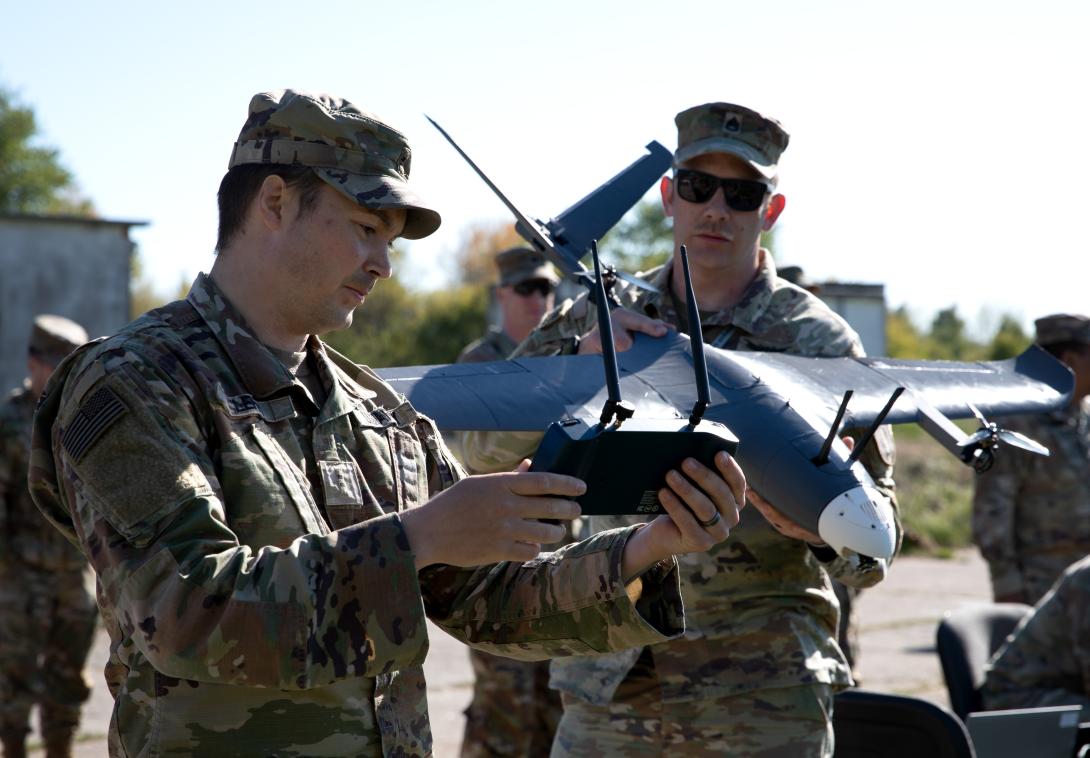Arcane Thunder 25 Tests Live Data-Sharing Across Theaters
The U.S. Army Europe and Africa’s most recent multidomain exercise showcased improvements in interoperability across continents, especially sharing live data across theaters.
Arcane Thunder 25 (AT25), U.S. Army Europe and Africa’s 2nd Multi-Domain Task Force-led exercise took place May 11-27 across training locations in Germany, Poland and the United States and featured more than 300 U.S. and allied service members from Italy, Germany, Croatia and Poland.
The goal of the exercise was to test the 2nd Multi-Domain Task Force’s ability to operate across all domains, find targets at depth and strike those targets with kinetic and non-kinetic effects, Maj. Gen. John L. Rafferty Jr., commander of the 56th Artillery Command, said during a media roundtable Friday.
Some of the capabilities that were tested in training exercises were unmanned systems for sea, air and land; both large and small high-altitude balloons with payloads and launched effects; and command and control systems.
“One of the biggest breakthroughs for us was our ability to fight with live data across essentially a large-scale combat theater,” Rafferty said.
Col. Patrick C. Moffett, commander of the 2nd Multi-Domain Task Force, said his soldiers focused on taking data from the available sensors on high-altitude platforms, launched effects and long-duration unmanned aircraft systems and merging the data collected.
“Our biggest challenge as an organization was ensuring we had a good data management process to collect, observe and ensure the data we were pushing out for our sensor-to-shooter kill chain was correct, valid and good data,” Moffett said. “The essence of multidomain operations is the ability to process data faster than our adversaries.”
While the exercise featured some new technologies, the purpose of AT25 was also to train with familiar technologies and learn how to stitch them together for multidomain operations.
The task force worked with unmanned surface vehicles to practice sharing data with joint partners in real time. The vessels identified a target, the target then got passed to the 2nd Multi-Domain Task Force All-Domain Operations Center, and Polish partners received the target from there during the exercise. Moffett said the obtaining and sharing of data was improved from the last Arcane exercise, with the ability to track the movement of unmanned surface vehicles in real time.
Rafferty said the way the services were able to share, refine and analyze data across continents and then assign the target to the right shooter was the most important development during the exercise. What once took hours can now be completed in about two minutes, he said.

The essence of multidomain operations is the ability to process data faster than our adversaries.
Lt. Col. Aaron Ritzema, commander of the 2nd Multi-Domain Effects Battalion, said the other challenge for multidomain training is finding places where soldiers can safely bring multidomain capabilities together. Moving forward, commanders will have to think of ways they can build a virtual and constructive training environment that will allow soldiers to put all of the pieces together.
Soldiers are already finding ways to create personal training environments using a first-person-view drone at the 2nd Multi-Domain Task Force’s innovation lab, Ritzema said. He explained it’s like a video game that is also a piece of software Ukrainians have used to train, and it allows different types of soldiers to train together.
“It was our first time to really get those aviation soldiers sitting next to those EW [electronic warfare] soldiers and learning to work together to maneuver their platforms, to get their payloads in the right position to provide that timely sensing data,” Ritzema said.
One of U.S. Army Europe and Africa’s emerging initiatives that will benefit from the multidomain training during AT25 is the development of the Baltic Defense Line, which will integrate manned and unmanned systems persistent in deep sensing, Rafferty shared.
“This Arcane Thunder was leaps and bounds ahead of the last one—and I was very familiar with the last event—in that it went from experimentation to really concept proofing and qualification of soldiers and teams and critical tasks,” Rafferty said.





Comments